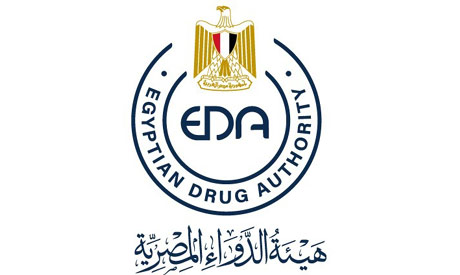The Egyptian Drug Authority (EDA), a country’s regulatory agency in the sphere of healthcare products, has published a guidance document dedicated to the requirements for unique device identification (UDI) for medical devices. The scope of the guidance covers both general and in vitro diagnostic (IVD) medical devices, as well as accessories thereto, while the recommendations provided in the guidance should be taken into consideration by medical device manufacturers, their authorized representatives, as also other parties involved in operations with medical devices, such as importers and distributors. At the same time, the authority explicitly states that the products intended for research or investigational use are falling outside its scope, together with custom-made medical devices.

Table of Contents
Regulatory Background
Under the general rule, the unique device identification system is initially intended to improve patient protection by facilitating the following:
- Identification and Control of medical devices during their life cycles;
- Identification & Traceability of medical devices in adverse events and field safety corrective actions;
- Safe and effective use of devices and reduction of medical errors;
- Documentation and longitudinal capture of data on medical devices.
Hence, the UDI system is intended to ensure the identification of medical devices allowed for marketing and use in the country for numerous purposes including, inter alia, adverse event reporting or safety corrective actions, such as recalls. Additionally, the system could be used to identify counterfeit devices or to include information about devices used in the appropriate clinical information system and other data sets.

UDI Requirements
The guidance further describes in detail the applicable requirements in the sphere of unique device identification. In particular, the authority states the following:
- A medical device manufacturer is the one responsible for assigning and managing GS1 general specifications, standards, and guidelines. Hence, it is the main party responsible for the product intended to be placed on the country’s market.
- Should the device in question be initially encoded by a different agency, the appropriate notification should be submitted to EDA.
- The Unique Device Identifier is composed of two elements: the UDI-DI and the UDI-PI. The first element provides information about the device itself and is used to assess information about the device stored in the respective database. This identifier is the same for all packaging levels. The second element is used to identify the particular product, so the information it should contain includes such details as a lot number, serial number, batch number, software identification number, expiration date, or any other production’s reference on the label or package. In this regard, the authority also mentions that the manufacturing date is not a mandatory element, except the cases when it is the only identifier of a specific product.
- The appropriate identifiers should be placed on a medical device itself, as well as on all levels of its packaging. According to the guidance, identifiers should be provided in the following forms:
- Easily readable plain-text (also known as Human Readable Interpretation (HRI)), and
- AIDC technology.
- Apart from the information outlined hereinabove, the identifier placed on the device could also contain additional information the manufacturer finds necessary to add – for example, reference number used for internal purposes.
- The HRI format should comply with the respective requirements.
- In case the use of the AIDC technology is not obvious, the appropriate symbol should be duly placed near the respective carrier. In the case of several AIDC carriers used simultaneously, the one providing UDI information should be easily and readily identifiable.
- In case if due to the nature of the unique device identification information it could be provided in a form of a 2D barcode, the manufacturers are encouraged to use this format. Moreover, if the manufacturer is using RFID technology, a linear or 2D barcode or another type of barcode shall also be provided on the label. Any barcodes placed on the product or its packaging should comply with the respective requirements set forth by the applicable standards to ensure their readability and correct interpretation.
- The identifiers should be placed in a way ensuring they remain readable when the device is used for its intended purpose. Moreover, they should remain visible and readable within the whole life of the product. The AIDC elements should be placed in a way ensuring they are reachable.
- In case the identifier (including the AIDC element) could be accessed through the packaging of the product, there is no need to place additional identifiers on the package itself.
- The way the identifier is placed should not harm the safety or effectiveness of the product.
Direct Marking Requirements
Apart from the general requirements described hereinabove, the document also provides clarifications regarding the applicable direct marking requirements. In this respect, the authority states the following:
- The marking of the UDI is an additional requirement – it does not replace any other marking or labeling requirements. Hence, a medical device intended to be placed on the market should anyway contain all the marking and labeling as prescribed by the applicable national legislation.
- Should the product in question be a reusable medical device, a direct marking should be placed on the product itself in a way it remains visible and readable within the whole life of the product.
- At the same time, in case the primary label is placed on the product itself in a way ensuring it remains readable, there is no need to place a separate identifier.
- In case of inconsistency between the data provided in the device’s primary label, that is on the device itself and is permanent, and the data provided within the UDI label, the latter shall prevail, and the manufacturer, or its agent, shall take the appropriate corrective actions within 90 working days.
- In terms of information contained, the identifier placed on as a direct marking could be either identical to the one placed on the labeling of the product, or a different one, should it be reasonably necessary to identify the unlabeled/unpackaged product.
- According to the applicable regulatory requirements, such an identifier could be based on a Human Readable Interpretation (HRI) or AIDC technologies. The authority also mentions that both aforementioned technologies could be also used simultaneously.
- In certain cases, a medical device could be exempted from the direct marking requirements. According to the guidance, this applies in case the manufacturer can justify that:
- Any type of direct marking would interfere with the safety, performance, or effectiveness of the device;
- The device cannot be directly marked because it is not technically feasible.
In summary, the present EDA guidance provides an overview of the applicable unique device identification requirements and highlights the most important aspects to be considered by medical device manufacturers and other parties involved. The scope of the document also covers direct marking requirements and regulatory requirements associated thereto.
Sources:
How Can RegDesk Help?
RegDesk is a next-generation web-based software for medical device and IVD companies. Our cutting-edge platform uses machine learning to provide regulatory intelligence, application preparation, submission, and approvals management globally. Our clients also have access to our network of over 4000 compliance experts worldwide to obtain verification on critical questions. Applications that normally take 6 months to prepare can now be prepared within 6 days using RegDesk Dash(TM). Global expansion has never been this simple.

